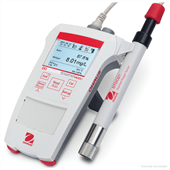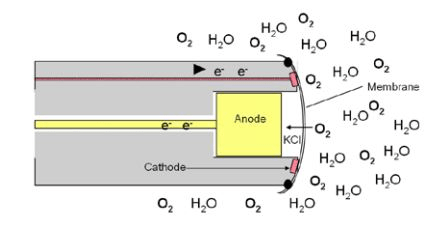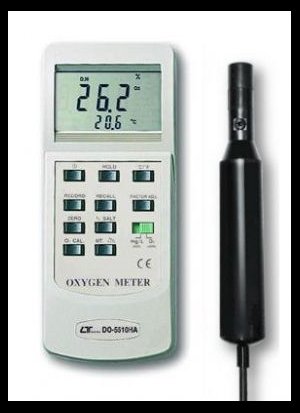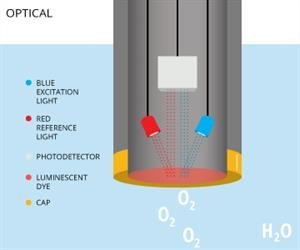Comparing different dissolved oxygen sensor technology!
Comparing different dissolved oxygen sensor technology! |
 | Dissolved oxygen (DO) is the level of free oxygen (O2) molecules present in water and is typically measured in mg/L. It is important parameter for monitoring water quality, aquatic biology and other environmental and industrial processes. Dissolved oxygen meters use either an optical or electrochemical sensor to measure DO. In this article we will look at the different types of DO sensors and the advantages and disadvantages of each option | |
Electrochemical sensors
Electrochemical sensors can be broken into 2 main types of sensors: polarographic and galvanic. Both use electrodes where the dissolved oxygen reacts with the cathode to produce a current. The electrode has a semi-permeable membrane which allows O 2 to pass through. Polarographic probes require an external voltage to work, whereas galvanic probes do not require an external voltage. The advantage
of a galvanic electrode is that it requires no start-up time, whereas a polarographic probe can take up to 15 minutes to polarise
sufficiently. The downside to this is that galvanic sensors are always consuming the anode, even when the unit is turned off
which means that the electrode needs to be replaced more frequently. The tradeoff is that polarographic electrodes require
more frequent changing of the electrolyte solution as it is consumed during use so they require more maintenance.
The main limitation of electrochemical sensors in general is that because they consume oxygen, there needs to be sufficient flow
of water across the membrane. So for low DO measurements with small volume samples, the sensors may consume a lot of the oxygen
in the sample. As such they’re better suited to flowing or large bodies of water.
Figure 1: A galvanic Dissolved Oxygen probe and how it undertakes measurements Our Most Popular Polygraphic DO Meter: DO-5510HA - Digital Oxygen Meter This Digital Oxygen Meter is supplied with a polarographic type probe with an incorporated temp. sensor which serves for precision
Dissolved Oxygen(DO), Oxygen in air(O 2), Temp measurement.
Optical DO sensors Optical DO sensors work by measuring the changes in luminescence of a luminescent molecule which gets excited by a blue LED source and then release light in the red wavelength. This red light is measured to determine a reading. The presence of oxygen limits the ability of the luminescent molecule to produce red light, and as such, oxygen levels can be determined. To improve the accuracy and stability of the measurement, the sensor will also emit red light that is reflected by the luminescent layer. This is used as a reference value.
Figure 2: The workings of an Optical Dissolved Oxygen Sensor Our Most Popular Optical DO Meter: Starter 400D Portable DO Meter - IC-ST400D-G  The optical probe requires minimal maintenance –frequent membrane replacement
If you’re still unsure about which DO Sensor is right for you, contact one of our scientists on 1300 737 871 or at [email protected]
| ||
See our other newsletter articles here!
Contact our expert scientists now to get the right meter or data logger to suit your needs and discuss your project.
Phone: 1300 737 871
Email: [email protected]



